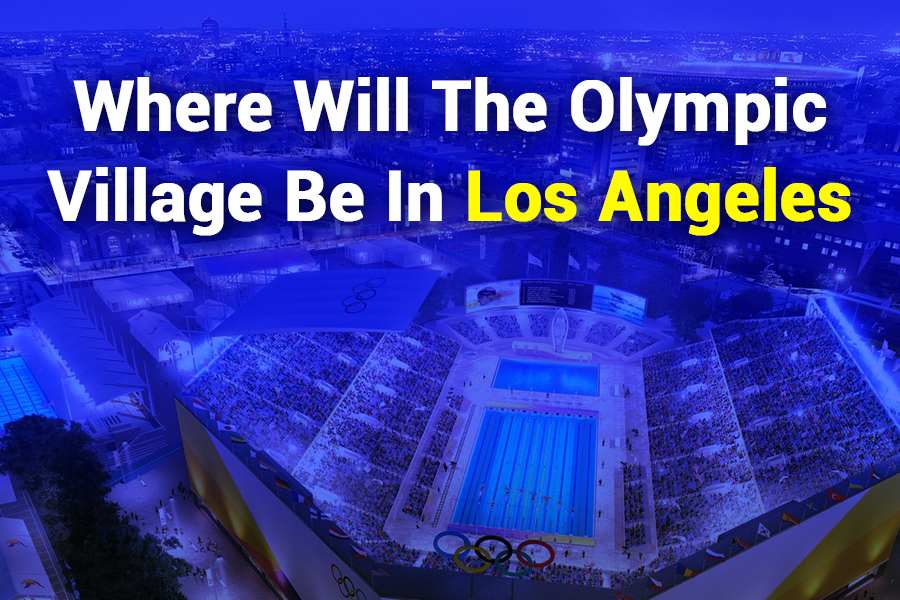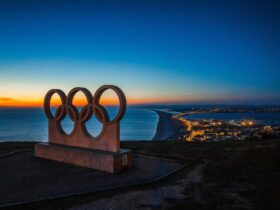As the 2028 Summer Olympics approach, anticipation builds around the most pressing infrastructure question: Where will the Olympic Village be in Los Angeles? The Olympic Village is the heartbeat of the games—a hub where thousands of athletes live, eat, train, and bond. Beyond its function during the event, it often serves as a legacy project that transforms into sustainable housing or urban communities. With Los Angeles taking the spotlight in 2028, the Olympic Village’s location, design, and purpose have become hot topics.
In this article, we explore the location of the Olympic Village in Los Angeles, why the site was selected, and how it aligns with the city’s long-term development goals. We also break down its environmental, social, and economic impacts. For sports fans, residents, and real estate watchers alike, knowing where the Olympic Village will be in Los Angeles offers insight into the future of the city and the legacy the Olympics will leave behind.
Where will the Olympic Village be in Los Angeles?
The Olympic Village for the 2028 Los Angeles Games will be located at the University of California, Los Angeles (UCLA) campus. The decision was made for cost-efficiency, sustainability, and existing infrastructure, allowing athletes to stay in modern housing facilities with access to training and dining areas already in place.
Why Is the Olympic Village Being Built at UCLA?
The answer to the widely asked question—where will the Olympic Village be in Los Angeles?—is the University of California, Los Angeles (UCLA). But why was this iconic campus selected over other potential locations?
UCLA offers a unique blend of readiness, sustainability, and strategic location. The campus already features high-capacity dormitories, modern dining facilities, and fitness centers, reducing the need for large-scale construction projects. This approach aligns perfectly with the LA28 Organizing Committee’s goal of creating a cost-effective and environmentally conscious Olympic Games.
Its location is also a significant asset. UCLA is within short driving distance of key Olympic venues such as the Downtown Sports Park and the Santa Monica coastline, allowing athletes to commute quickly while reducing their carbon footprint.
Security also played a critical role in the selection. UCLA’s existing security systems and contained campus layout make it easier to implement the heightened measures required during the Olympics. Once the Games conclude, the facilities will return to university use, ensuring that the investment delivers long-term benefits to the city and community.
How Will the UCLA Campus Accommodate Thousands of Athletes?
To answer the question, “How will the UCLA campus accommodate thousands of athletes?” Planners have created a well-rounded strategy combining existing infrastructure with strategic upgrades. Here’s how UCLA prepares to serve as the Olympic Village for the 2028 Games.
Extensive On-Campus Housing for Olympians
UCLA boasts one of the largest residential campuses in the United States, with accommodations for over 20,000 students. This existing infrastructure provides a strong foundation for housing thousands of athletes during the 2028 Summer Olympics. The dormitories are modern and secure and include essential amenities such as air conditioning, Wi-Fi, and accessibility features tailored to global athletic standards.
Upgrades and Temporary Additions for the Games
To meet Olympic requirements, UCLA will implement a range of temporary enhancements. These include expanded security checkpoints, athlete-focused medical facilities, and international media coordination areas. Multilingual support stations will also be introduced to ensure that language is never a barrier for any athlete or delegation.
International Dining and Nutritional Support
UCLA’s dining system is among the best in the country, and it can serve a wide variety of cuisines. Olympic meal services will be expanded to include international dishes and nutritionist-approved menus catering to elite athletes’ unique needs.
World-Class Training Within Campus Grounds
Several of UCLA’s gyms and sports complexes will be transformed into high-performance Olympic training centers. These spaces will have specialized equipment, recovery areas, and medical zones to reduce the need for off-campus travel.
Dedicated Transport and Mobility Systems
The campus will implement dedicated Olympic shuttle services and controlled access routes to transport athletes quickly and securely between UCLA and competition venues across Los Angeles.
What Are the Advantages of Choosing UCLA as the Olympic Village?
The decision to host the Olympic Village at UCLA offers a wide range of strategic advantages, making it a standout choice for the 2028 Summer Games. As organizers asked, “Where will the Olympic Village be in Los Angeles?”, UCLA emerged as the most practical and sustainable solution.
- Cost-Effectiveness: Leveraging existing dormitories and campus infrastructure significantly reduces the need for new construction, saving billions in taxpayer and sponsorship dollars.
- Sustainability: By minimizing new development, UCLA aligns with LA28’s green initiative to create an environmentally responsible Olympics. This reduces construction waste and carbon emissions.
- Proximity to Key Venues: UCLA’s location provides quick access to major competition sites like Downtown LA and Santa Monica. Reduced commute times allow athletes to focus more on performance and recovery.
- Enhanced Security: The campus already has controlled access points, surveillance systems, and emergency protocols. These can be scaled up to meet Olympic-grade security requirements without major overhauls.
- Post-Games Legacy: Once the Olympics conclude, the facilities will seamlessly return to regular academic use, avoiding the fate of abandoned villages seen in past host cities.
Choosing UCLA demonstrates how thoughtful planning can deliver long-term value while meeting the demands of a global event.
When Did Planning Begin and What’s the Current Status of the Olympic Village Construction?
Planning for the 2028 Los Angeles Olympics began shortly after the city was awarded hosting rights in 2017. Several locations were initially considered for the Olympic Village, including proposals to construct an entirely new complex in South Los Angeles. However, rising concerns about costs and environmental impact led organizers to reconsider. By 2022, UCLA emerged as the most practical and sustainable option, and its selection was officially announced in 2023.
Since then, preparations have been moving forward steadily. Renovation permits have been approved, dining facilities are being expanded, and essential contracts for security, sanitation, and transportation have been secured. Rather than build new structures, LA28 planners will upgrade existing dormitories with improved accessibility, ventilation systems, and Olympic branding.
This cost-conscious and eco-friendly approach marks a significant departure from past Olympic hosts. The UCLA model reflects a broader shift toward legacy-driven, sustainable planning, offering a blueprint for future Olympic cities.
Where Will the Olympic Village Be in Los Angeles and What Are the Surrounding Features?
If you’re wondering where the Olympic Village will be in Los Angeles, the answer lies within the vibrant heart of Westwood—on the UCLA campus. Here’s a closer look at the exact location and its surrounding features:
- Exact Location: The Olympic Village will span UCLA’s northwest residential zone, including De Neve Plaza, Rieber Hall, and Hedrick Summit. These buildings are among the most modern student housing facilities on campus and will be repurposed to host thousands of Olympians.
- Proximity to Downtown LA: UCLA is about 25 minutes from Downtown Los Angeles, placing athletes close to major Olympic venues like the Crypto.com Arena and the LA Memorial Coliseum.
- Access to Competition Venues: Nearby venues include Pauley Pavilion (basketball), Santa Monica Beach (beach volleyball), the UCLA Track Stadium (athletics warm-ups), and Sepulveda Basin (for kayaking and rowing events).
- Transportation Network: To ease movement, a new transportation system, including Metro extensions and secure Olympic shuttles, will directly connect the village to all key venues, reducing traffic and emissions.
- Local Environment and Amenities: The area also features serene botanical gardens, cultural museums, campus cafes, and designated wellness zones. Temporary Olympic lounges and global cultural exhibits will further enhance the athlete experience.
Final Thoughts
To answer the question of where the Olympic Village will be in Los Angeles, the University of California, Los Angeles, stands out as the most strategic and sustainable choice. Los Angeles embraces a more innovative, legacy-driven model, unlike previous Olympic host cities that built massive, often abandoned villages. By utilizing UCLA’s existing infrastructure, the city reduces costs, minimizes environmental impact, and provides athletes with high-quality accommodations close to major venues. This approach benefits the games and the broader community, ensuring long-term value well beyond 2028. Los Angeles isn’t just preparing to host another Olympics—it’s setting a new global standard for how Olympic Villages should be designed, managed, and reintegrated into urban life.
FAQ’s
Where will the Olympic Village be in Los Angeles for the 2028 Olympics?
The Olympic Village will be located at UCLA’s residential campus in Westwood, Los Angeles, and will utilize existing student housing to host athletes and officials.
Why was UCLA chosen for the Olympic Village?
UCLA was selected due to its ready-to-use infrastructure, strategic proximity to Olympic venues, and alignment with LA28’s sustainability and legacy goals.
How many athletes will UCLA accommodate during the Olympics?
The campus is expected to house approximately 15,000 athletes and team officials, using its extensive dormitory network and upgraded facilities.
What will happen to the Olympic Village after the games?
Post-Olympics, all housing and facilities will transition back into student use, ensuring zero resource waste and maximum long-term benefit.
Is the Olympic Village accessible for international athletes with diverse needs?
Yes, UCLA will provide accessibility improvements, multilingual services, and culturally diverse meals to support athletes worldwide.





Leave a Reply